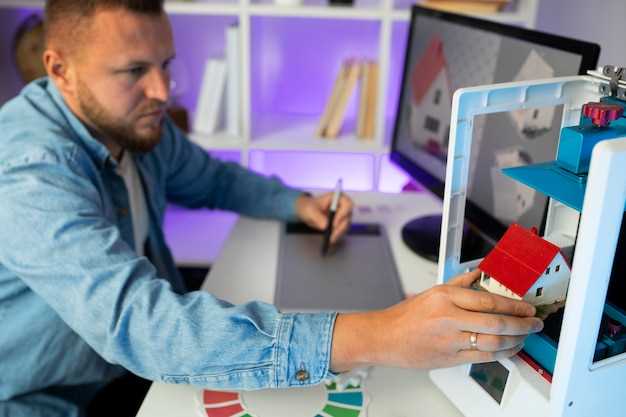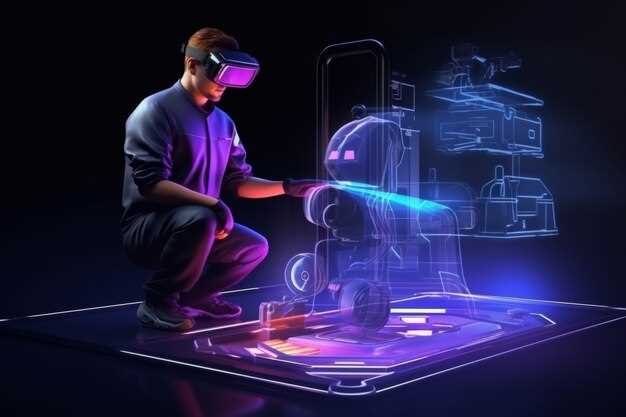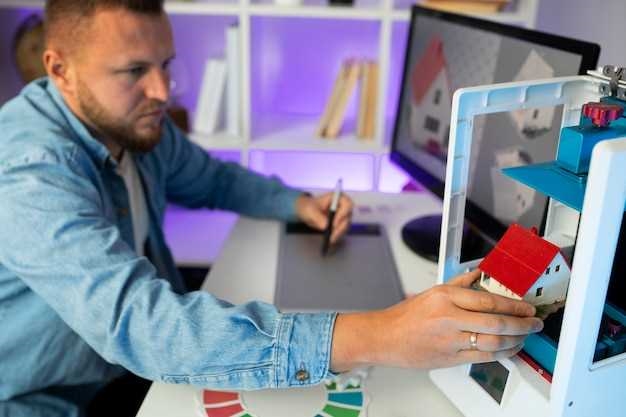
In the ever-evolving landscape of digital creativity, the realm of web design continues to push boundaries and redefine the way we interact with the online world. As technology advances at an unprecedented pace, designers find themselves at the forefront of a revolution, harnessing emerging technologies and embracing novel design trends to create captivating and immersive digital experiences.
With each passing day, the digital realm becomes more intertwined with our daily lives, seamlessly integrating into our routines and shaping our interactions. As a result, the demand for innovative web design has never been greater. Designers are constantly challenged to find new ways to captivate and engage users, crafting visually stunning interfaces that effortlessly blend form and function.
One of the key driving forces behind the future of web design lies in the exploration of emerging technologies. From artificial intelligence and virtual reality to voice user interfaces and machine learning, these cutting-edge innovations offer designers a wealth of possibilities to create truly transformative experiences. By harnessing the power of these technologies, designers can elevate their craft to new heights, delivering personalized and intuitive interfaces that adapt to the unique needs and preferences of each user.
Moreover, as design trends continue to evolve, designers are embracing a more holistic approach, focusing not only on aesthetics but also on the overall user experience. The concept of user-centered design has gained prominence, emphasizing the importance of understanding the user’s needs, goals, and behaviors. By placing the user at the center of the design process, designers can create intuitive and seamless experiences that resonate with their target audience.
In this article, we will delve into the exciting world of web design, exploring the latest technologies and design trends that are shaping the future of digital creativity. From the integration of augmented reality in web interfaces to the rise of minimalist and micro-interaction design, we will uncover the transformative power of these innovations and their potential to revolutionize the way we interact with the digital realm.
Artificial Intelligence in Web Design: Enhancing User Experience

In the realm of web design, there is a growing presence of Artificial Intelligence (AI) that is revolutionizing the way websites are created and experienced. By harnessing the power of AI, designers are able to enhance the user experience in ways that were previously unimaginable. This section explores the impact of AI in web design and how it is shaping the future of user interaction.
Transforming User Interaction
AI has the ability to transform user interaction on websites by providing personalized and intuitive experiences. Through machine learning algorithms, AI can analyze user behavior and preferences, allowing websites to adapt and customize content in real-time. This level of personalization creates a seamless and engaging user experience, increasing user satisfaction and retention.
Automating Design Processes
AI is also revolutionizing the design process itself. With the help of AI-powered tools, designers can automate repetitive tasks, such as creating layouts, selecting color schemes, and generating responsive designs. This not only saves time and effort but also allows designers to focus on more creative aspects of web design, resulting in visually stunning and innovative websites.
Furthermore, AI can assist in the creation of accessible websites by automatically optimizing designs for different devices and screen sizes. This ensures that all users, regardless of their device or abilities, can have a seamless browsing experience.
Embracing the Potential of AI
As AI continues to advance, its potential in web design is limitless. From chatbots that provide instant customer support to voice-controlled interfaces that make navigation effortless, AI is reshaping the way we interact with websites. By embracing AI in web design, designers can create user-centric experiences that are tailored to individual needs, preferences, and behaviors.
In conclusion, the integration of Artificial Intelligence in web design is revolutionizing the user experience. By leveraging AI’s capabilities, designers can create personalized and intuitive websites that adapt to user preferences. Additionally, AI automates design processes, allowing designers to focus on creativity and innovation. As AI continues to evolve, its potential in web design is boundless, promising even more exciting advancements in the future.
Virtual Reality and Augmented Reality: Transforming the Web Design Landscape
In this section, we will explore the revolutionary impact of virtual reality (VR) and augmented reality (AR) on the ever-evolving field of web design. These immersive technologies have the potential to completely transform the way websites are created, experienced, and interacted with, opening up new possibilities for designers and users alike.
VR and AR offer unique opportunities to engage users in a more immersive and interactive web experience. With VR, users can be transported to virtual worlds, where they can explore and interact with content in a three-dimensional space. AR, on the other hand, overlays digital information onto the real world, enhancing the user’s perception and interaction with their physical surroundings.
One of the key advantages of VR and AR in web design is the ability to create highly personalized and tailored experiences. By leveraging these technologies, designers can create websites that adapt to each user’s preferences, providing a more engaging and relevant experience. For example, a VR-enabled website could dynamically adjust its content based on the user’s location, interests, or even their physiological responses.
Furthermore, VR and AR can revolutionize the way users navigate and interact with websites. Traditional navigation menus and buttons can be replaced with intuitive gestures and movements in a virtual or augmented environment. Users can navigate through a website by simply looking at different elements or using hand gestures, making the browsing experience more intuitive and immersive.
Another exciting aspect of VR and AR in web design is the potential for enhanced storytelling and visual communication. These technologies enable designers to create immersive narratives and visual experiences that go beyond traditional static images and text. Users can be fully immersed in a story or concept, experiencing it firsthand and engaging with the content on a deeper level.
As VR and AR continue to evolve and become more accessible, the possibilities for web design are endless. From e-commerce websites that allow users to virtually try on products before purchasing, to educational platforms that provide immersive learning experiences, the integration of VR and AR into web design is set to revolutionize the way we interact with the online world.
- VR and AR offer immersive and interactive web experiences.
- Personalized and tailored experiences can be created using VR and AR.
- VR and AR revolutionize website navigation and interaction.
- Enhanced storytelling and visual communication are possible with VR and AR.
- The integration of VR and AR into web design opens up endless possibilities.
Voice User Interface: The Rise of Conversational Web Design
In this section, we will explore the growing significance of voice user interface (VUI) and its impact on the evolution of web design. As technology advances, the way we interact with websites and applications is changing, and conversational web design is emerging as a prominent trend.
Enhancing User Experience through Voice Interaction
Conversational web design leverages voice user interface to enhance user experience by providing a more natural and intuitive way of interacting with websites. Instead of relying solely on traditional graphical user interfaces, users can now engage in conversations with websites, making the browsing experience more interactive and engaging.
The Benefits of Conversational Web Design
- Improved Accessibility: Voice user interface enables individuals with disabilities or those who struggle with traditional interfaces to access and navigate websites more easily.
- Efficiency and Convenience: Conversational web design allows users to perform tasks and access information more quickly, as they can simply speak their requests instead of typing or clicking through menus.
- Personalization: By understanding user preferences and context through voice interactions, websites can deliver personalized content and recommendations, creating a more tailored experience.
- Multi-platform Compatibility: Voice user interface can be integrated across various devices and platforms, including smartphones, smart speakers, and wearable devices, ensuring a consistent experience for users.
As voice recognition technology continues to improve, conversational web design is expected to become even more prevalent in the future. Websites and applications will need to adapt to accommodate voice interactions and provide seamless experiences for users.
Progressive Web Apps: Bridging the Gap between Websites and Mobile Apps
In this section, we will explore the concept of progressive web apps and how they are revolutionizing the way we interact with websites and mobile applications. Progressive web apps (PWAs) are a new breed of web applications that combine the best features of both websites and mobile apps, offering users a seamless and immersive experience.
The Rise of Progressive Web Apps

With the increasing popularity of mobile devices and the growing demand for fast and responsive web experiences, progressive web apps have emerged as a solution to bridge the gap between websites and mobile apps. These apps leverage the latest web technologies to deliver app-like experiences directly through a web browser, eliminating the need for users to download and install traditional mobile apps.
By utilizing features such as offline functionality, push notifications, and access to device hardware, progressive web apps provide users with a native app-like experience, while still being accessible through a URL like a traditional website. This approach offers several advantages, including improved performance, increased engagement, and broader reach across different platforms and devices.
The Benefits of Progressive Web Apps
One of the key benefits of progressive web apps is their ability to work offline or in low connectivity environments. By caching the app’s assets and data, PWAs can still function even when the user is offline, ensuring a seamless experience regardless of the network conditions. This is particularly useful for users in areas with limited internet access or for those who frequently travel.
Another advantage of progressive web apps is their ability to send push notifications to users, just like native mobile apps. This allows businesses to engage with their users in real-time, providing updates, promotions, or important information directly to their devices. By leveraging push notifications, PWAs can increase user engagement and retention, leading to improved customer satisfaction and loyalty.
Furthermore, progressive web apps are platform-agnostic, meaning they can be accessed on any device with a modern web browser, regardless of the operating system. This eliminates the need for businesses to develop separate apps for different platforms, reducing development costs and maintenance efforts. Additionally, PWAs can be easily updated and deployed, ensuring that users always have access to the latest version of the app without the need for manual updates.
In conclusion, progressive web apps are revolutionizing the way we interact with websites and mobile apps by combining the best features of both worlds. With their ability to work offline, send push notifications, and provide a consistent experience across different platforms, PWAs offer a compelling solution for businesses and users alike. As technology continues to evolve, progressive web apps are expected to play a significant role in shaping the future of web design.
Microinteractions: Adding Delightful Details to Web Design
In the ever-evolving landscape of web design, it is crucial to stay ahead of the curve and embrace innovative approaches that captivate users. One such approach is the integration of microinteractions, which are small, subtle details that enhance the overall user experience and add a touch of delight to web design.
Enhancing User Engagement
Microinteractions are the tiny interactions that occur within a website or application, often going unnoticed by users. These interactions can be as simple as a button changing color when hovered over or as complex as a progress bar indicating the completion of a task. By incorporating these small details, web designers can create a more engaging and interactive experience for users.
For example, imagine a website where a user hovers over a product image, and a small animation reveals additional information about the product. This subtle interaction not only provides valuable information but also adds an element of surprise and delight, making the user feel more connected to the website.
Building Emotional Connections
Microinteractions have the power to evoke emotions and create a memorable experience for users. By carefully crafting these interactions, web designers can establish a sense of personality and human touch within their designs.
Consider a website that incorporates microinteractions in the form of playful animations or witty error messages. These small details can make the user smile, laugh, or feel understood, fostering a positive emotional connection with the website and its brand.
By paying attention to these delightful details, web designers can elevate the overall user experience and leave a lasting impression on visitors. Microinteractions may be small in size, but their impact on web design is significant.
Dark Mode: Aesthetic and Functional Trend in Web Design
In the realm of contemporary web design, a captivating and practical trend has emerged, known as Dark Mode. This aesthetic and functional approach to designing websites has gained significant popularity in recent years. Dark Mode, characterized by its dark color scheme, offers a visually striking and immersive experience for users.
Dark Mode not only enhances the overall aesthetics of a website but also provides several functional benefits. By reducing the amount of light emitted from the screen, Dark Mode reduces eye strain and fatigue, particularly in low-light environments. This makes it an ideal choice for users who spend extended periods of time browsing the web or engaging with digital content.
Moreover, Dark Mode has proven to be particularly beneficial for mobile devices, as it helps conserve battery life. The dark color palette requires less power to display, resulting in increased battery efficiency and prolonged usage. This advantage has made Dark Mode a sought-after feature for mobile applications and websites.
From a design perspective, Dark Mode allows for creative exploration and experimentation. It offers a unique canvas for designers to showcase their skills and create visually captivating experiences. The contrast between dark backgrounds and vibrant elements can create a sense of depth and highlight important content, resulting in a more engaging and memorable user experience.
While Dark Mode has gained popularity, it is important for designers to consider its potential drawbacks. Some users may find it challenging to read text or navigate through websites with dark backgrounds, especially if the contrast is not appropriately adjusted. Therefore, it is crucial to strike a balance between aesthetics and usability when implementing Dark Mode in web design.
In conclusion, Dark Mode has emerged as a prominent trend in web design, offering both aesthetic appeal and functional advantages. Its visually striking nature, reduced eye strain, battery efficiency, and creative potential make it a compelling choice for designers and users alike. As technology continues to evolve, Dark Mode is likely to remain a significant aspect of the future of web design.






